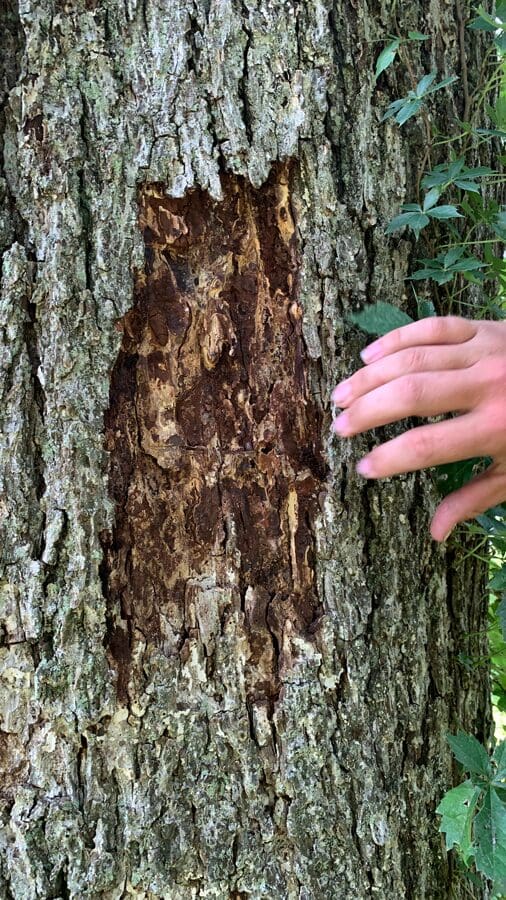Ant Infestation in Trees – Hessmer, LA

Hessmer, Bunkie, Mansura, Evergreen, and near by areas have been dealing with ant infestation in trees here locally for years. Ants are amazing creatures! It’s so cool how they work together and adapt to different environments. But when ant infestation is found in our trees and in our gardens, it’s time to take action! Yes, ants can potentially cause damage to trees. Some species of ants, such as carpenter ants, can tunnel through the wood of trees, causing structural damage and weakening the tree’s overall health. These ants are attracted to decaying or damaged wood, and can further exacerbate any existing issues within the tree. Additionally, ants can also protect and foster other damaging insects, such as aphids, which can further harm the tree by feeding on its leaves and sap. However, it is important to note that not all ants are harmful to trees. Some species of ants, such as the red imported fire ant, can actually protect trees by preying on other destructive insects. It is crucial to accurately identify the species of ants present on the tree to determine whether they are causing harm or providing beneficial protection.
Regular ants, also known as Formica ants, are small in size, usually around 1/8 inch long and are typically black, brown, or red in color. Carpenter ants are larger, about ½ inch long, and can be black, red, or a combination of both. Carpenter ants also have a rounded thorax, while regular ants have a pointed one.
The Formica ant, also known as the black ant, is a small insect that measures around ⅕ of an inch in length. They are black in color with a somewhat circular-shaped head and a ridged and uneven thorax, although this can be hard to distinguish due to their small size. Unlike carpenter ants, Formica ants pose no threat to trees. They are commonly found in wooded areas and are not known to cause damage to trees. These ants are primarily scavengers, feeding on dead insects, nectar, and honeydew.
Carpenter ants are a diverse group of ants, varying in size and color depending on the species. In general, they are larger than black ants, measuring around ¼-½ of an inch. The coloring of carpenter ants can range from black to orange, often with a reddish hue. Unlike black ants, their bodies are more symmetrical and evenly rounded, with heart-shaped heads. Carpenter ants are known for their sharp mandibles, which they use for biting and chewing through materials, such as wood.
These ants are capable of causing damage to wooden structures, as they tunnel through the wood to create nests. It’s important to address carpenter ant infestations promptly to prevent structural damage. Due to their ability to cause significant harm to property, it’s essential to be able to identify and address carpenter ant infestations effectively.
Carpenter ants can be a problem for trees, as they create galleries within the wood by chewing tunnels, ultimately causing damage to the tree. However, it’s important to note that carpenter ants are not the primary reason for a tree’s decline. These ants are attracted to moisture and hollow points within a tree, indicating that the tree is already in a state of decay. This decay could be a result of various issues, such as disease or environmental factors. Carpenter ants expedite the decay process, making it difficult for the tree to regain strength.
It’s crucial to address the underlying issues that lead to the tree’s decay, rather than just treating the carpenter ant infestation. Proper tree care, including pruning, watering, and disease prevention, can help prevent the tree from becoming vulnerable to carpenter ants. In cases where the infestation is severe, it may be necessary to seek professional help to safely remove the carpenter ants and address the tree’s underlying health issues.
What To Do If Your Trees Have Carpenter Ants
If you notice an influx of carpenter ants on your trees, it’s important to take action to address the issue. One effective method to deal with an ant problem in trees is to use ant killer. Spraying boric acid or an insecticide like ant powder around the base of the tree can be quite effective. As ants come into contact with the poison, they are killed, and when other ants consume the poisoned ones, it further reduces the ant population. Keep in mind that this approach will take some time to work, as the ants need to naturally migrate through the treated area, and the poison may need to be reapplied after rainfall, as it can be washed away. Additionally, it’s important to ensure that any products used are safe for the tree and surrounding environment. Taking action promptly can help prevent carpenter ants from causing damage to your trees.
If you suspect that your trees have been affected by ant infestation here in Louisiana, HLA Lawn Services, Hessmer, Louisiana offers a complimentary evaluation by our certified arborist. Our team will assess the damage and provide recommendations on saving or removing the affected trees. Schedule your consultation today.
